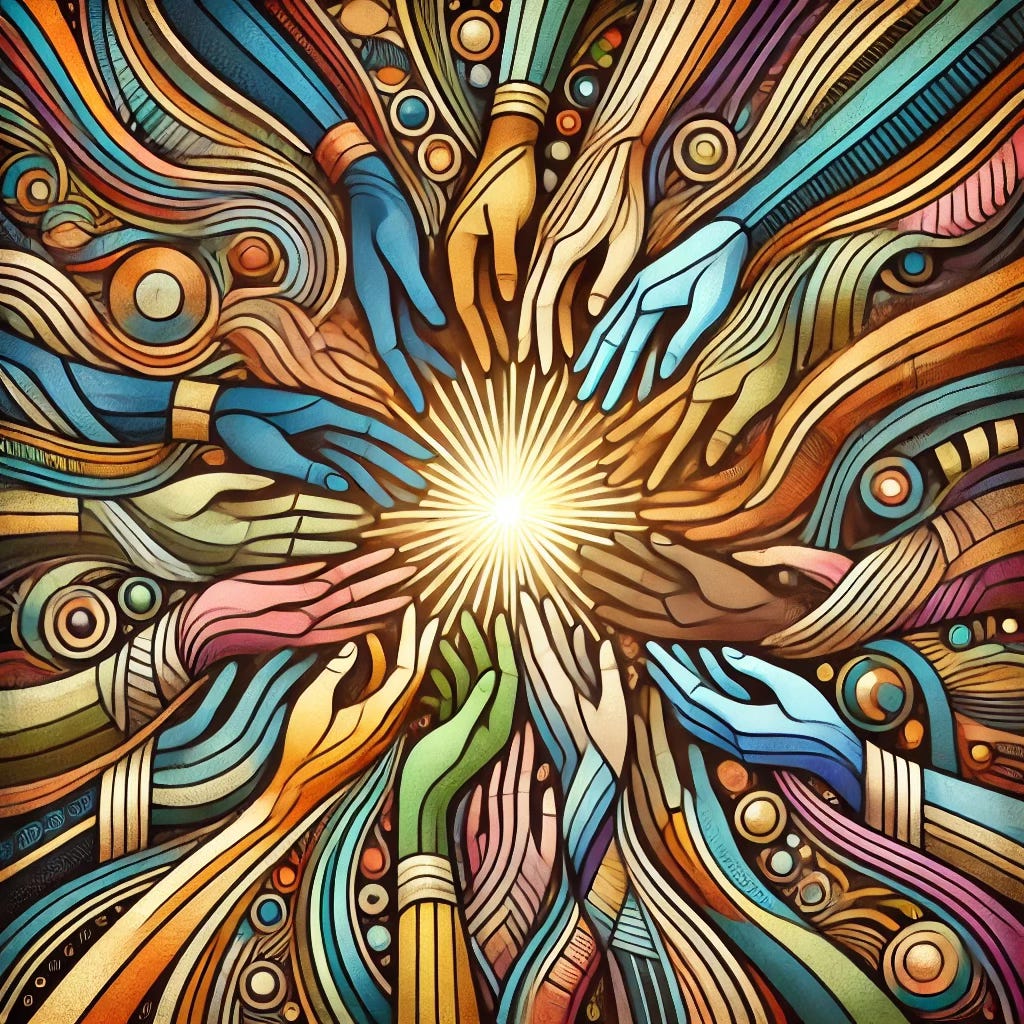How to Begin Community Building
And Why Intersectional Leadership is Essential
Introduction:
Welcome back to the Allyship Series. As we continue this journey together, I want to thank those who have chosen to support this work by subscribing. Your contributions make it possible for these conversations to reach more people and for this work to remain accessible. If you’d like to access this series but face financial barriers, please email me at scholarships@desireebstephens.com. Equity is at the heart of liberation work, and no one should feel excluded.
In our last article, From Ally to Co-Creator: Shifting the Paradigm for True Liberation, we explored the shift from seeking validation to practicing accountability. This journey is about moving beyond performance into deep, intentional work rooted in shared liberation.
Today, we expand on this conversation by discussing how to begin community building within white spaces while acknowledging the critical need for intersectional leadership. True community building does not happen in silos of whiteness—it requires the inclusion of Black, Indigenous, and other marginalized voices that are often excluded. Without this perspective, white communities risk replicating the very patterns of harm they aim to dismantle.
Community Building as Liberation Work
True community building isn’t just a feel-good activity—it’s a deliberate and sacred act of liberation. Within liberation spaces, is an opportunity to break down the systems of supremacy culture that create isolation, competition, and fear. This work is not just for the benefit of marginalized communities; it’s also for the liberation of white-bodied people themselves.
To begin, let’s ground this work in the understanding that community building within white spaces is not separate from dismantling supremacy culture—it is the very foundation of it.
The Role of Supremacy Culture in White Spaces
Supremacy culture undermines community in countless ways. Here are a few of the 15 Pillars of Supremacy Culture that frequently show up in white spaces, creating barriers to trust and solidarity:
Individualism: Supremacy culture promotes the idea that we are separate and self-sufficient, discouraging collaboration and mutual support.
Fear of Open Conflict: Avoiding difficult conversations keeps communities from addressing harm and building trust.
Worship of the Written Word: An overemphasis on formal, written communication can exclude those who express themselves differently, limiting dialogue and connection.
Quantity Over Quality: Prioritizing output over depth of engagement often undermines meaningful relationships, making community building feel transactional rather than transformative.
Paternalism: The tendency to make decisions for others, rather than with them, erodes trust and reinforces hierarchy within communities.
By recognizing these patterns, we can begin to disrupt them. However, without the inclusion of Black and Indigenous voices, white spaces risk reinforcing these dynamics instead of dismantling them.
Why Community Building Can’t Happen in a Silo
White-only spaces, even when focused on allyship, often fail to recognize the blind spots created by supremacy culture. These spaces can reinforce harmful dynamics of individualism, defensiveness, and paternalism, creating insular environments that lack the accountability and perspective necessary for true intersectional work.
The truth is this: you cannot dismantle systems of harm while staying steeped in the culture that created them. To build genuine community, white-bodied people must be willing to invite and center voices from marginalized groups, particularly those who have been most affected by systemic oppression.
Intersectional leadership ensures that community-building efforts address the full scope of systemic harm—not just the parts that are visible from a white perspective. Black and Indigenous-led spaces are essential for guiding this work because they bring the lived experiences, wisdom, and cultural grounding necessary to dismantle supremacy culture at its roots.
Community Building as a Sacred Act
Community building is more than an action—it is sacred work. It requires vulnerability, intention, and the recognition that we are not just building relationships but actively dismantling the systems that have kept us disconnected and fragmented. To create a truly equitable world, community building must transcend the transactional and embrace the transformative.
In liberation spaces, the act of coming together represents resistance to the isolation and division that supremacy culture perpetuates. By building relationships rooted in trust, accountability, and shared humanity, we are actively undoing the systems that tell us we must go it alone, that we must compete, or that we must dominate.
Sacred work acknowledges that this is not easy. It requires patience, forgiveness, and a commitment to repair. It calls us to hold space for one another in ways that reflect the world we want to create—not the one we seek to leave behind.
Reflection: How does viewing community building as sacred change the way you approach it? What rituals or practices could you incorporate to honor the sacredness of this work?


